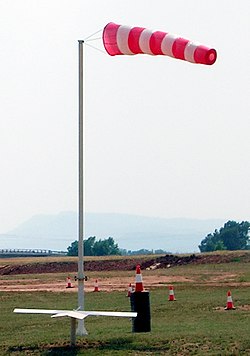Wind energy: Difference between revisions
Tag: non-English content |
|||
| Line 28: | Line 28: | ||
=== Practical wind turbine power === |
=== Practical wind turbine power === |
||
Further insufficiencies, such as rotor blade [[friction]] and [[drag (physics)|drag]], gearbox losses, generator and converter losses, reduce the power delivered by a wind turbine. The basic relation that the turbine power is (approximately) proportional to the third power of velocity remains. |
Further insufficiencies, such as rotor blade [[friction]] and [[drag (physics)|drag]], gearbox losses, generator and converter losses, reduce the power delivered by a wind turbine. The basic relation that the turbine power is (approximately) proportional to the third power of velocity remains. |
||
Thats not the 3D printer!!!!!!!!!!!!!!!!!!!!!!!!!!!!!!!!!!!!!!!!!!!!!!!!!!!!!!!!!!!!!!!!!!!!!!!!!!!!!!!!!!!!!!!!!!!!!!!!!!!!!!!!!!!!!!!!!!!!!!!!!!!!!!!!!!!!!!!!!!!!!!!!!!!!!!!!!!!!!!!!!!!!!!!!!!!!!!!!!!!!!!!!!!!!!!!!!!!!!!!!!!!!!!!!!!!!!!!!!!!!!!!!!!!!!!!!!!!!!!!!!!!!!!!!!!!!!!!!!!!!!!!!!!!!!!!!!!!!!!!!!!!!!!!!!!!!!!!!!!!!!!!!!!!!!!!!!!!!!!!!!!!!!!!!!!!!!!!!!!!!!!!!!!!!!!!!!!!!!!!!!!!!!!!!!!!!!!!!!!!!!!!!!!!!!!!!!!!!!!!!!!!!!!!!!!!!!!!!!!!!!!!!!!!!!!!!!!!!!!!!!!!!!!!!!!!!!!!!!!!!!!!!!!!!!!!!!!!!!!!!!!!!!!!!!!!!!!!!!!!!!!!!!!!!!!!!!!!!!!!!!!!!!!!!!!!!!!!!!!!!!!!!!!!!!!!!!!!!!!!!!!!!!!!!!!!!!!!!!!!!!!!!!!!!!!!!!!!!!!!!!!!!!!!!!!!!!!!!!!!!!!!!!!!!!!!!!!!!!!!!!!!!!!!!!!!!!!!!!!!!!!!!!!!!!!!!!!!!!!!!!!!!!!!!!!!!!!!!!!!!!!!!!!!!!!!!!!!!!!!!!!!!!!!!!!!!!!!!!!!!!!!!!!!!!!!!!!!!!!!!!!!!!!!!!!!!!!!!!!!!!!!!!!!!!!!!!!!!!!!!!!!!!!!!!!!!!!!!!!!!!!!!!!!!!!!!!!!!!!!!!!!!!!!!!!!!!!!!!!!!!!!!!!!!!!!!!!!!!!!!!!!!!!!!!!!!!!!!!!!!!!!!!!!!!!!!!!!!!!!!!!!!!!!!!!!!!!!!!!!!!!!!!!!!!!!!!!!!!!!!!!!!!!!!!!!!!!!!!!!!!!!!!!!!!!!!!!!!!!!!!!!!!!!!!!!!!!!!!!!!!!!!!!!!!!!!!!!!!!!!! |
|||
== References == |
== References == |
||
Revision as of 14:15, 18 October 2011
| Part of a series on |
| Renewable energy |
|---|
 |


Wind energy is the kinetic energy of air in motion; see also wind power.
Total wind energy flowing through an imaginary area A during the time t is:
E = ½ m v2 = ½ (A * v * t * ρ) v 2
where v is the wind speed; ρ is the air density; (A * v * t) is the volume of air passing through A (which is considered perpendicular to the direction of the wind); (A * v * t * ρ) is therefore the mass m passing per unit time. Note that ( ½ ρ * v2) is the kinetic energy of the moving air per unit volume.
Power is energy per unit time, so the wind power incident on A (e.g. equal to the rotor area of a wind turbine) is:
P = E / t = ½ A * ρ * v3
Wind power in an open air stream is thus proportional to the third power of the wind speed; double the wind speed and 8 times the power passes. Wind turbines for grid electricity therefore need to be especially efficient at the faster wind speeds.
History of usage by humans
The wind has been used for thousands of years as a source of energy. Sailors capture it in the sails of their ships, and weather has therefore had important historical consequences, for example, the Spanish Armada was defeated with the help of stormy weather around the British Isles. The Netherlands are famous for the use of windmills with four cloth sails. These were used for pumping water to drain polders forming agricultural land. In the UK, Norfolk borrowed this Dutch expertise to do the same, leaving distinctive features on the flat lowland landscape.
Electric energy
Theoretical power captured by a wind turbine
Total wind power could be captured only if the wind velocity is reduced to zero. In a realistic wind turbine this is impossible, as the captured air must also leave the turbine. A relation between the input and output wind velocity must be considered. Using the concept of stream tube, the maximal achievable extraction of wind power by a wind turbine is 59% of the total theoretical wind power[1] (see: Betz' law).
Practical wind turbine power
Further insufficiencies, such as rotor blade friction and drag, gearbox losses, generator and converter losses, reduce the power delivered by a wind turbine. The basic relation that the turbine power is (approximately) proportional to the third power of velocity remains. Thats not the 3D printer!!!!!!!!!!!!!!!!!!!!!!!!!!!!!!!!!!!!!!!!!!!!!!!!!!!!!!!!!!!!!!!!!!!!!!!!!!!!!!!!!!!!!!!!!!!!!!!!!!!!!!!!!!!!!!!!!!!!!!!!!!!!!!!!!!!!!!!!!!!!!!!!!!!!!!!!!!!!!!!!!!!!!!!!!!!!!!!!!!!!!!!!!!!!!!!!!!!!!!!!!!!!!!!!!!!!!!!!!!!!!!!!!!!!!!!!!!!!!!!!!!!!!!!!!!!!!!!!!!!!!!!!!!!!!!!!!!!!!!!!!!!!!!!!!!!!!!!!!!!!!!!!!!!!!!!!!!!!!!!!!!!!!!!!!!!!!!!!!!!!!!!!!!!!!!!!!!!!!!!!!!!!!!!!!!!!!!!!!!!!!!!!!!!!!!!!!!!!!!!!!!!!!!!!!!!!!!!!!!!!!!!!!!!!!!!!!!!!!!!!!!!!!!!!!!!!!!!!!!!!!!!!!!!!!!!!!!!!!!!!!!!!!!!!!!!!!!!!!!!!!!!!!!!!!!!!!!!!!!!!!!!!!!!!!!!!!!!!!!!!!!!!!!!!!!!!!!!!!!!!!!!!!!!!!!!!!!!!!!!!!!!!!!!!!!!!!!!!!!!!!!!!!!!!!!!!!!!!!!!!!!!!!!!!!!!!!!!!!!!!!!!!!!!!!!!!!!!!!!!!!!!!!!!!!!!!!!!!!!!!!!!!!!!!!!!!!!!!!!!!!!!!!!!!!!!!!!!!!!!!!!!!!!!!!!!!!!!!!!!!!!!!!!!!!!!!!!!!!!!!!!!!!!!!!!!!!!!!!!!!!!!!!!!!!!!!!!!!!!!!!!!!!!!!!!!!!!!!!!!!!!!!!!!!!!!!!!!!!!!!!!!!!!!!!!!!!!!!!!!!!!!!!!!!!!!!!!!!!!!!!!!!!!!!!!!!!!!!!!!!!!!!!!!!!!!!!!!!!!!!!!!!!!!!!!!!!!!!!!!!!!!!!!!!!!!!!!!!!!!!!!!!!!!!!!!!!!!!!!!!!!!!!!!!!!!!!!!!!!!!!!!!!!!!!!!!!!!!!!!!!!!!!!!!!!!!!!!!!!!!!
References
See also
External links
- http://rredc.nrel.gov/wind/pubs/atlas/ - Wind Energy Resource Atlas of the United States
- http://www.scadasolutions.com/livesite/wind-tutorial.shtml Wind Energy Tutorial
